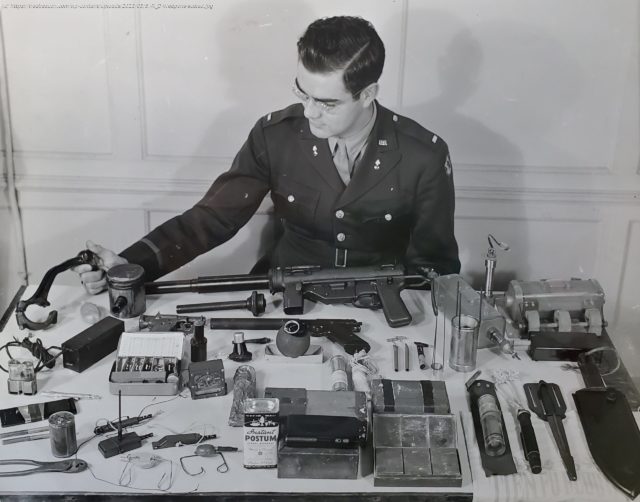Array
When the CIA launched its in-house R&D lab in 2020, the agency announced it would conduct “multidisciplinary research, development, testing, and engineering to address new challenges” and “adapt, improve, or accelerate the production of existing solutions.”
If you’re wondering what the hell that means, the ever-secretive agency offered a sample of the research: artificial intelligence, data analytics, machine learning, distributed ledger/blockchain-enabled technologies, virtual and augmented reality.
If you’re disappointed to learn that America’s premier spy service is diddling about with Bitcoin and VR headsets, you’ll find some consolation in historian John Lisle’s The Dirty Tricks Department, which chronicles the effort by the CIA’s predecessor agency, the World War II-era Office of Strategic Services, to develop unconventional weapons and gadgets to help America’s spies win the underground battle against the Axis powers.
In a democratic spirit, the agency fielded hundreds of thousands of submissions from the public, including suggestions to develop a “death ray” and flying cars. One proposal stood out from the rest—and received the backing of President Roosevelt: strapping napalm-filled incendiaries to bats and unleashing the winged creatures on Imperial Japan. In 1943, the agency tested the so-called bat bombs over Carlsbad, New Mexico, dumping hundreds of incendiary-strapped bats out the back of B-25 bombers. Most of the creatures, refrigerated into an artificial hibernation for transportation, fell to their deaths. The handful that survived then burned down part of an Army barracks and control tower.
The agency still enjoyed success elsewhere. Stanley Lovell, a Cornell-educated industrial chemist turned R&D chief, developed a silenced .22 pistol at a time when silencers had all but disappeared from the U.S. market. To test its efficacy, Bill Donovan, the OSS chief who successfully lobbied FDR to create the intelligence agency in 1942, fired the weapon behind the president while Roosevelt was dictating a letter to a secretary in the Oval Office. Roosevelt, in Donovan’s telling, only noticed the weapon after smelling burnt gunpowder and cracked wise that the OSS chief “was the only Republican whom he would ever allow in his office with a gun.






